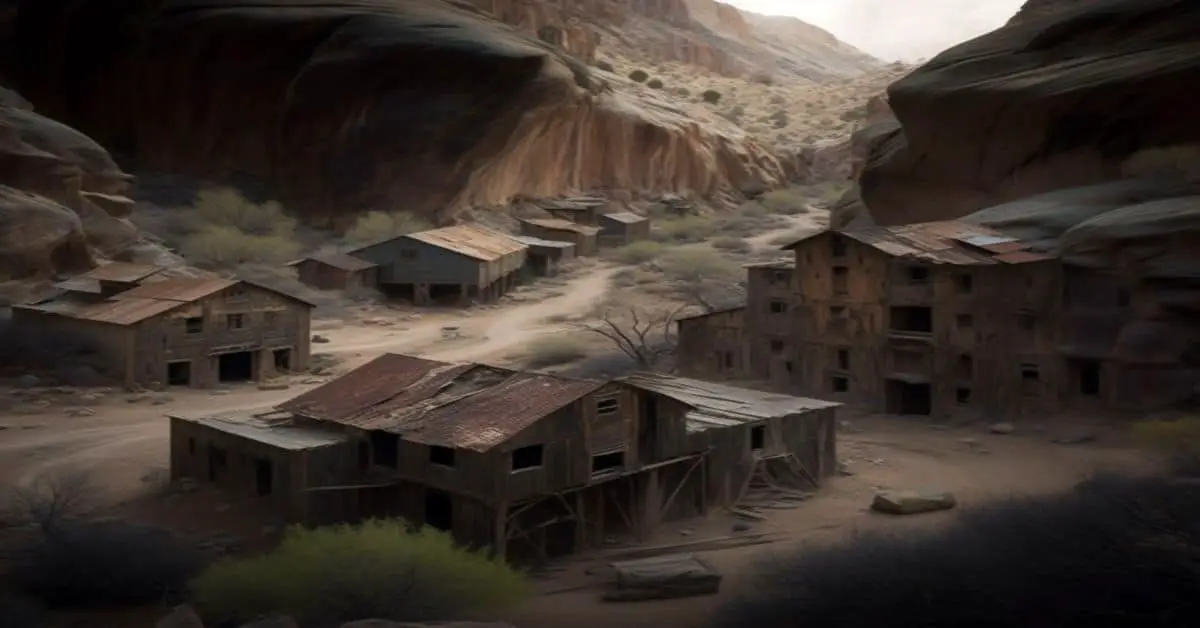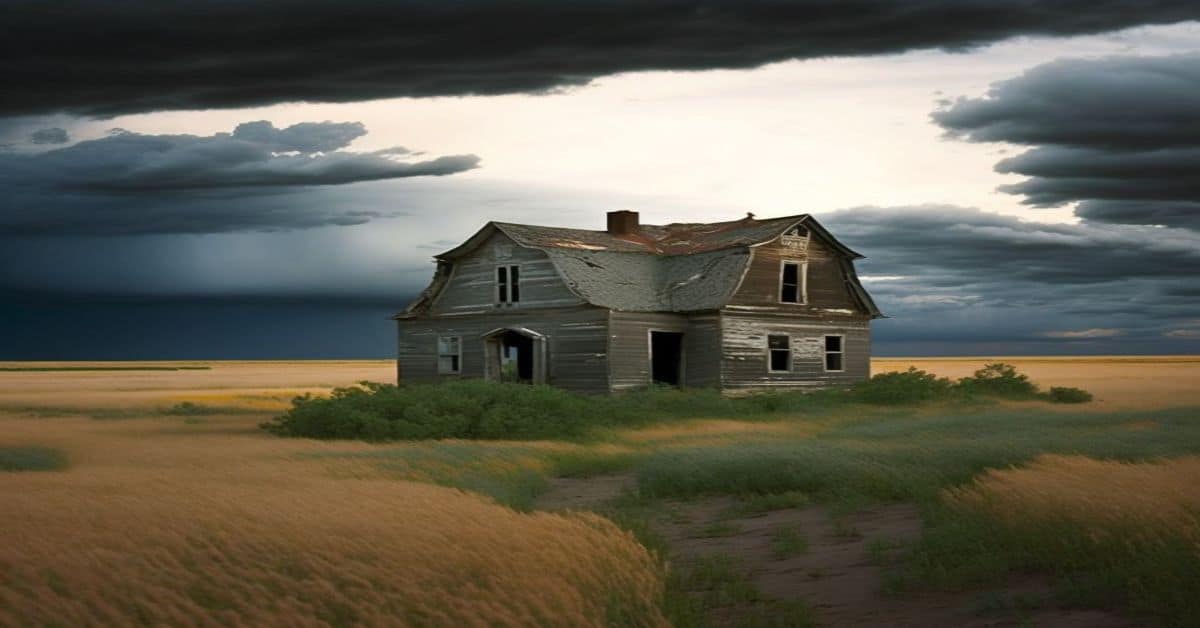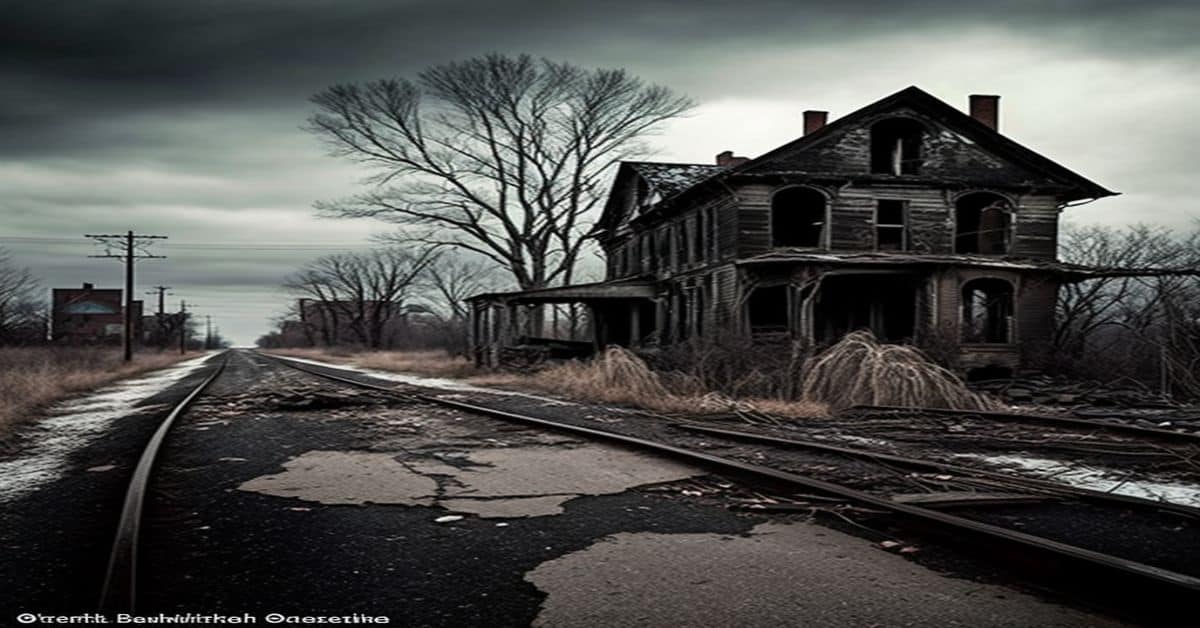Deep in the heart of Big Bend National Park lies an abandoned town that was once a popular destination for those seeking the healing powers of its natural hot springs. However, the town’s history dates back much further than its popularity as a health resort.
It was once home to indigenous peoples of the region, who valued the hot springs for their restorative properties. Over time, the town was transformed by J.O. Langford into a facility that catered to invalids seeking treatment.
Despite its long and storied history, the town has remained abandoned since 1952. Today, it is considered a creepy and haunted location by some visitors.
In this article, we will delve into the history and origins of this intriguing location, explore its features and facilities, and hear personal accounts and experiences from those who have visited this abandoned Texas ghost town.
Key Takeaways
- Hot Springs in Big Bend National Park has a rich history dating back to indigenous peoples valuing hot springs for their restorative properties.
- The site was transformed into a facility for invalids seeking treatment and was part of a national park after being sold to the state of Texas in 1942.
- Despite rumors of supernatural activity and being considered a creepy, haunted ghost town by some visitors, Hot Springs remains a popular destination for those seeking the healing properties of curative waters.
- The site is currently owned by three lawyers from El Paso and is located in Big Bend National Park, accessed by a caliche road south of Sierra Blanca, Texas.
History and Origins
The history and origins of Hot Springs in Big Bend National Park can be traced back to its initial use by indigenous people along the Rio Grande. These indigenous people first discovered the hot springs and recognized their healing properties.
Later, J.O. Langford purchased the land in 1909 for $1.61 per acre and developed the site into a complete facility for invalids seeking treatment in the curative waters. Langford himself experienced improved health after daily baths in the hot springs and developed a clientele of people seeking treatment.
J.O. Langford’s impact on Hot Springs was significant. He not only developed the site into a healing facility but also named it and made it known throughout the region.
After Langford sold the site to the state of Texas in 1942, it became part of the national park and has remained uninhabited since 1952. Despite its lack of human inhabitants, the site remains a popular destination for visitors seeking to learn more about the history of Hot Springs and its healing properties.
Features and Facilities
Buildings and facilities are available for visitors seeking treatment at the Hot Springs site. The site was once developed into a complete facility for invalids seeking curative waters, and several buildings still remain intact. The National Park Service protects the buildings and springs, making them accessible to the public.
The site is located in Big Bend National Park and can be accessed by a caliche road that runs south of Sierra Blanca, Texas. Three lawyers from El Paso now own the site, although it was once owned by J.O. Langford, who purchased the land for $1.61 per acre in 1909.
Visitors who want to learn more about the Hot Springs history can visit the Sierra Blanca museum, which a retired Texas Ranger runs. The site is also improved by the Hunts, who put in a road off of I-10 east of El Paso, Texas.
Some visitors find the site creepy, even in broad daylight, and it is allegedly haunted by the ghosts of Indians who were stricken with smallpox after being sold infected blankets. Despite these rumors, the Hot Springs remain a popular destination for visitors seeking to experience the healing properties of the curative waters.
Personal Accounts and Experiences
Visitors to the Hot Springs have reported mixed experiences, with some finding the site unsettling and creepy, even in broad daylight. Some have described feeling a sense of unease and discomfort, while others have reported feeling soothed and relaxed by the healing waters.
However, there have also been reports of supernatural activity at the site. Some visitors have claimed to have seen apparitions and heard strange sounds, adding to the site’s eerie reputation.
Donna Coffee, who visited the site with her family and dogs, reported a negative experience. Her dogs did not like the site, and she felt uncomfortable there. It is unclear if her experience was related to any supernatural activity or if it was simply a personal discomfort. However, her account adds to the overall perception of Hot Springs as a potentially haunted location.
Despite this, the site remains accessible to the public and attracts visitors seeking a unique experience in the heart of Big Bend National Park.
Frequently Asked Questions
What is the current condition of the buildings at Hot Springs?
The current condition of the buildings at Hot Springs, located in Big Bend National Park, is unknown. However, the site is protected by the National Park Service and is considered historically significant. Current preservation efforts aim to maintain the site for public access.
What other activities or attractions are there in the surrounding area?
The surrounding area of Hot Springs offers several hiking trails and nearby lakes for visitors to explore. These natural attractions provide opportunities for outdoor activities such as fishing, swimming, and camping, adding to the variety of experiences available in the region.
Are there any guided tours or programs available at Hot Springs?
Hot Springs in Big Bend National Park offers guided tours and educational programs for visitors. These activities provide a deeper understanding of the history and geology of the area, as well as the curative properties of the hot springs.
Has there ever been any documented paranormal activity at the site?
Paranormal investigations have been conducted at Hot Springs, with some local legends claiming the site is haunted by the ghosts of smallpox-stricken Indians. However, no documented evidence of paranormal activity exists.
Are there any plans for future development or restoration of Hot Springs?
Potential investors have expressed interest in developing Hot Springs, but the site’s location within Big Bend National Park raises concerns about the environmental impact. No plans for development or restoration have been announced.


